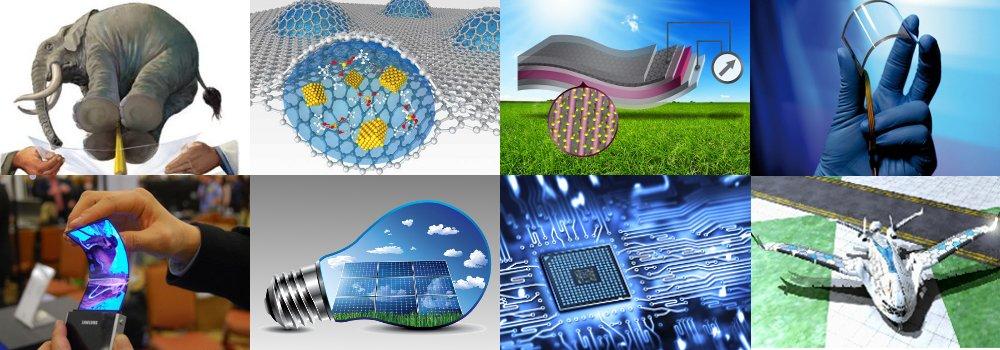Graphene printed by inkjet printer for flexible electronics

Graphene printed by inkjet printer for flexible electronics
In near future, flexible electronics will change our lives in amazing ways, like water-resistant tablet computers that can be rolled or folded it called ” Rolltop ” , A group of academic and industry researchers has now demonstrated one of the most important components for this fully flexible future
but we’ve yet to see anything mind-blowing come to market. A team of scientists from the University of Texas in Austin, however, think they’ve found the key to changing that: ultrafast graphene transistors printed on flexible plastic.
There are many different candidate materials for flexible circuits, each with its own set of problems. Some perform calculations too slowly for practical applications; others excel at speed signal processing, but find graphene one of the best choice so scientists work hard to exploiting graphene’s exceptional electronic, mechanical, and thermal properties for practical devices requires fabrication techniques that allow the direct manipulation of graphene on micro- and macroscopic scales.
Because graphene has a unique combination of properties that is ideal for next-generation electronics, including mechanical flexibility, high electrical conductivity, and chemical stability. Combine this with inkjet printing, already extensively demonstrated with conductive metal nanoparticle ink.

Inkjet printed graphene patterns: a) droplet matrix, b) lines, and c) a film corner.
Although liquid-phase graphene dispersions have been demonstrated, scientists are still struggling with sophisticated inkjet printing technologies that allow efficient and reliable mass production of high-quality graphene patterns for practical applications.
In this way, scientists work for improved the ink formulation mainly through polymer stabilization. Before distillation, a small amount of polymer (ethylcellulose) is added into the harvested graphene/DMF dispersion to protect the graphene flakes from agglomeration. After printing, the stabilizing polymers can be effectively removed through a simple annealing process.”
The resulting graphene dispersion had a stable period of at least several weeks. The researchers point out that the inks provide well-directed and constant jetting out of all nozzles at an even velocity, which is comparable to the performance of commercially available inks.
To investigate the quality of the printed graphene, the team fabricated large-area centimeter-scale graphene thin films with between 1 and 6 graphene printed layers on glass slides.
The need to transfer lots of little slices of the crystal would make it difficult to pull off at large scale, according to Ali Javey – materials scientist in University of California, Berkeley –
“Graphene is very practical and low cost,” he says.
Indeed, says Akinwande, his group is very focused on keeping costs down by making graphene from inexpensive starting materials and producing the devices over large areas. To make the transistors, the researchers first fabricate all the non-graphene-containing structures the electrodes and gates that will be used to switch the transistors on and off on sheets of plastic. Separately, they grow large sheets of graphene on metal, then peel it off and transfer it to complete the devices. Akinwande says they use this graphene-last approach because the material is very sensitive to all the processing needed to make the other components. Finally, they top the sheet with a waterproof layer.
The graphene transistors are not only speedy but robust. The devices still work after being soaked in water, and they’re flexible enough to be folded up. “As you make electronics thinner, the mechanical properties get better and better,” says Javey. “And graphene is the thinnest material you can have.”
Akinwande is now working with industry partners, including glass maker Corning of New York and 3M of Saint Paul, Minnesota, to demonstrate printed graphene circuits on a larger, more practical scale. And the group is currently designing a printer for continuously manufacturing graphene circuits. “All the building blocks are done,” says Akinwande. He says the circuits could be manufacturable in five to 10 years.





















